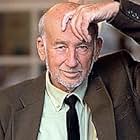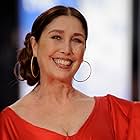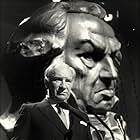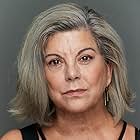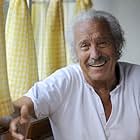- Premi
- 1 vittoria e 3 candidature
Sfoglia gli episodi
Foto
Trama
Recensione in evidenza
Agreeable and slow-moving biopic, including historical retrospections about the prestigious scientist Santiago Ramon y Cajal. A splendid miniseries stars Adolfo Marsillach as Ramon y Cajal (1982), 9 episodes directed by Jose Maria Forqué with Veronica Forqué, Fernando Fernan Gomez , Encarna Paso, Manuel Zarzo, Walter Vidarte, José Canalejas, Adriano Domínguez, Ismael Merlo, Laura Cepeda, Félix Dafauce, Emilio Laguna, Manuel Gil, Luis Barbero, Fernando Cebrián, among others. It is an enjoyable biography, though tediously paced, at times , from childhood to adult period, being skilfully dramatised and well starred by Adolfo Marsillach. Dealing with the notorious scientific who is considered to be the head of the wise men, discovering the developing of the nervous cells. Santiago Ramón y Cajal's structural scheme of the nervous system as a set of independent and defined units became known as the "doctrine of the neuron", and it highlights the law of dynamic polarization, a model capable of explaining the unidirectional transmission of the nervous impulse. Ramon Y Cajal was born in Petilla de Aragón, 1 May 1852 and died in Madrid, 17 October 1934. At his infancy he is submitted by his dominant father: Fernando Fernan Gómez who shapes son's future to become his own man . As an adult character he attended at the Zaragoza University as a detached pupil. The first few months in the military were spent in Zaragoza, and soon after, there were calls for the Military Medical Corps, in which, out of a hundred candidates for thirty-two positions, he obtained number 6. He was assigned as a 'second doctor' (lieutenant) to the Burgos regiment, quartered in Lérida, with the mission of defending the Llanos de Urgel from attacks by the Carlists. Later on, he was in the Cuban war as a doctor, there being wounded and sick of hemoptisis. He attached the first grade as a professor in Valencia University. He studied illness as tuberculosis, tisis, and means to combat it. Cajal himself used to practice with a simple microscope that enabled him the visualization of the real structure of the central nervous system, based on individual cells, the neurons. For which both Cajal was bestowed the Medicine Nobel Prize in Stockholm 1906.
It deals faithfully of the famous doctor Santiago Ramon y Cajal, but relies heavily on his relationship with his father, wife and children . Santiago Ramón y Cajal was a Spanish physician and scientist, specialized in histology and pathological anatomy. He shared the Nobel Prize in Medicine in 1906 with Camillo Golgi "in recognition of their work on the structure of the nervous system". He was a pioneer in the description of the ten synapses that make up the retina. Through his research on the mechanisms that govern the morphology and connective processes of nerve cells, he developed a new and revolutionary theory that began to be called the "doctrine of the neuron", based on the fact that brain tissue is composed of individual cells. A humanist as well as a scientist, he is considered the head of the so-called Generation of Wise Men. He is frequently cited as the father of neuroscience. It is an interesting biography regarding his universitary time, studies, teachings, family and anything else. There is a special remembrance of the Cuban war and his illness that almost caused his death. His overseas stay was as bitter for him as the illnesses he contracted there. He had to face administrative chaos, the incompetence and immorality of certain rulers and some army commanders, from the commander of the post to the cooks and part of the officers of the detachment, who had the habit of stealing for themselves the food and resources that were lacking from the sick and wounded. Bitter experiences that led him to request permission to leave Cuba, which was granted on May 30, 1875 after being diagnosed with "severe malarial cachexia" and declared "unfit for campaigning." He arrived in Spain in June 1875 through the port of Santander, Cantabria, turned into a human wreck, who in no way resembled the vigorous and athletic young man who had arrived in Cuba a year earlier. To get half of his back pay back, he had to bribe the official on duty, otherwise they threatened to delay his stay indefinitely. However, "it is worth noting here that part of the savings from his stay in Cuba were the financial basis that allowed Ramón y Cajal to acquire the microscope, a microtome, chemical reagents and dyes with which, upon his return, he set up a modest laboratory in which he would begin his histological research." His return to Spain and the care provided by his mother and sisters gradually restored Santiago Ramón y Cajal's health and allowed him to resume his academic career, on the way to teaching (1876) and a doctorate. Cajal , magnificently played by Adolfo Marsillach, elaborated his known theory about neurons, nervious cells and central nervous system formed by independient cells by adopting Golgi's silver staining method. Marsillach is finely accompanied by a great plethora of secondary actors. The series was competently directed by José Maria Forqué.
There's another good biographic rendition: Leap to Fame (Salto a la Gloria)(1959) by Leon Klimovsky with Adolfo Marsillach himself, Jose Marco Davo, Angel Alvarez, Rafael Bardem, Jose Sepulveda, Goyo Lebrero, Enrique Avila, Manuel Pombo, Julia Caba Alba, Isabel de Pomes , Manuel Arbo, Antonio Molino Rojo, Jose Manuel Martin.
It deals faithfully of the famous doctor Santiago Ramon y Cajal, but relies heavily on his relationship with his father, wife and children . Santiago Ramón y Cajal was a Spanish physician and scientist, specialized in histology and pathological anatomy. He shared the Nobel Prize in Medicine in 1906 with Camillo Golgi "in recognition of their work on the structure of the nervous system". He was a pioneer in the description of the ten synapses that make up the retina. Through his research on the mechanisms that govern the morphology and connective processes of nerve cells, he developed a new and revolutionary theory that began to be called the "doctrine of the neuron", based on the fact that brain tissue is composed of individual cells. A humanist as well as a scientist, he is considered the head of the so-called Generation of Wise Men. He is frequently cited as the father of neuroscience. It is an interesting biography regarding his universitary time, studies, teachings, family and anything else. There is a special remembrance of the Cuban war and his illness that almost caused his death. His overseas stay was as bitter for him as the illnesses he contracted there. He had to face administrative chaos, the incompetence and immorality of certain rulers and some army commanders, from the commander of the post to the cooks and part of the officers of the detachment, who had the habit of stealing for themselves the food and resources that were lacking from the sick and wounded. Bitter experiences that led him to request permission to leave Cuba, which was granted on May 30, 1875 after being diagnosed with "severe malarial cachexia" and declared "unfit for campaigning." He arrived in Spain in June 1875 through the port of Santander, Cantabria, turned into a human wreck, who in no way resembled the vigorous and athletic young man who had arrived in Cuba a year earlier. To get half of his back pay back, he had to bribe the official on duty, otherwise they threatened to delay his stay indefinitely. However, "it is worth noting here that part of the savings from his stay in Cuba were the financial basis that allowed Ramón y Cajal to acquire the microscope, a microtome, chemical reagents and dyes with which, upon his return, he set up a modest laboratory in which he would begin his histological research." His return to Spain and the care provided by his mother and sisters gradually restored Santiago Ramón y Cajal's health and allowed him to resume his academic career, on the way to teaching (1876) and a doctorate. Cajal , magnificently played by Adolfo Marsillach, elaborated his known theory about neurons, nervious cells and central nervous system formed by independient cells by adopting Golgi's silver staining method. Marsillach is finely accompanied by a great plethora of secondary actors. The series was competently directed by José Maria Forqué.
There's another good biographic rendition: Leap to Fame (Salto a la Gloria)(1959) by Leon Klimovsky with Adolfo Marsillach himself, Jose Marco Davo, Angel Alvarez, Rafael Bardem, Jose Sepulveda, Goyo Lebrero, Enrique Avila, Manuel Pombo, Julia Caba Alba, Isabel de Pomes , Manuel Arbo, Antonio Molino Rojo, Jose Manuel Martin.
I più visti
Accedi per valutare e creare un elenco di titoli salvati per ottenere consigli personalizzati
Dettagli
- Data di uscita
- Paese di origine
- Lingua
- Celebre anche come
- Ramón y Cajal: Historia de una voluntad
- Azienda produttrice
- Vedi altri crediti dell’azienda su IMDbPro
Contribuisci a questa pagina
Suggerisci una modifica o aggiungi i contenuti mancanti




